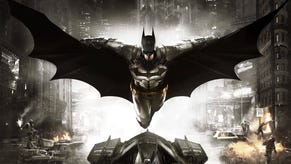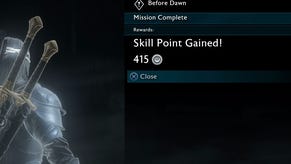Xbox One X Shadow of War shows profound improvements over PS4 Pro
One version to rule them all?
While we can draw conclusions about PlayStation 4 Pro and Xbox One X from their respective specs sheets, real-life comparisons are somewhat thin on the ground right now. Microsoft's new console should offer a comprehensive improvements owing to more memory, higher levels of bandwidth and a big compute advantage, but to what extent will it actually matter in the homogenised world of multi-platform development? From an extended look at the Gamescom build of Shadow of War running on Xbox One X, the signs are looking good for the green team's new hardware, with an immediately obvious, comprehensively improved presentation - possibly the most dramatic boost we've seen to date.
Make no mistake though, as we've previously discussed, the PS4 Pro version of 'Wardor' is no slouch. Its dynamic resolution averages out at around 1620p over the base machine's full HD, while geometry draw distance and shadow LODs are improved. However, even after upgrading to the latest patch 1.04, the Pro still exhibits many low quality textures that stick out like a sore thumb - especially noticeable on ultra HD displays.
Implementation of the PC version's 4K texture pack would have done wonders here, but clearly the limited 512MB of extra RAM available to Pro developers isn't enough to house the top-tier assets. And that's the most immediately obvious difference between PS4 Pro and Xbox One X versions of the game - what sticks out right away is that texture problems on PS4 Pro are eradicated. Through sheer capacity via Xbox One X's 12GB of GDDR5 memory, Shadow of War offers a dramatic improvement in quality: for example, ground textures get a clear resolution bump from the soup-like results on Pro, offering a sharper, clearer presentation.
Monolith has also brought over the dual presentation modes from PS4 Pro - and enhanced them. There's a quality-biased offering that prioritises better visual settings like draw distance, along with a resolution mode that delivers a native 4K image. And to be clear, both options deliver better textures than PS4 Pro regardless of which you choose. On quality mode you get the best assets possible on Xbox One X, while the resolution mode uses a slightly lower quality texture filtering - blurring the ground slightly, despite using the same texture seting. Compared to PS4 Pro's texture work on its quality mode (which is also a match for its resolution mode), these still both trump it in sheer clarity though - it's a big upgrade.
Additionally, whether it's quality or resolution mode, you still get the benefit of improved ambient occlusion over a standard Xbox One. Dividing the two modes, Xbox One X gets a big boost in draw distance if you opt for the quality setting: an overview of a castle during a siege for example, shows more shadow detail and geometry rendered in from range. It prevents the pop-in you might see on other machines, and the world just feels more cohesive as a result.
In comparing PS4 Pro and Xbox One X, it makes sense to use the quality setting on both systems. Subtle as it may be, it's evident that Microsoft's machine gets even better draw distance settings overall on mountain-side geometry and small objects, over and above PS4 Pro's existing enhancements. It's a small improvement and nothing like the scale of the texture upgrades - but another advantage that shows Xbox One X veering close to PC's best presets.
On top of the quality and resolution modes shared with Sony's 'supercharged' console, Xbox One X adds another toggle that can be deployed on either preset: dynamic resolution. It's hard-set on PS4 Pro, but Xbox One X users can disable it if they want to take their chances with a less stable performance level. Assuming that toggle is disabled, what you get in quality mode is a native resolution of 3520x1980. That's 1980p fixed on Xbox One X - or very close to it - bringing a leap in image quality over the PS4 Pro's ballpark 2880x1620 output.


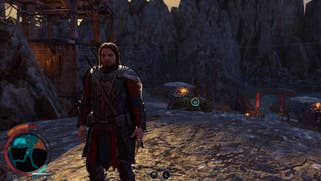

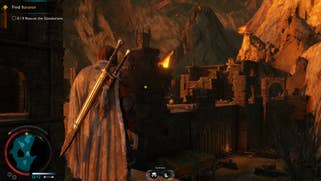



Based on the Gamescom build, Xbox One X's resolution mode bears mention too if you want a superior 4K picture. From what we've tested, a native 3840x2160 is achieved from the machine this way, fixed at that number, as long as the dynamic res checkbox is left blank. The machine forces the maximum resolution here, but at the cost of texture filtering and LOD quality we have on the quality mode, it's maybe not the best way to go. Based on playing through Shadow of War in both quality and resolution mode with dynamic res enabled and disabled, we'd trade the clarity of the game's 4K output for the additional features of the quality mode.
And yes, we'd enable dynamic resolution too. Quality mode with this checkbox selected can drop the pixel count to 3360x1890 - the lowest point we've measured so far. For reference, that's still higher than PS4 Pro's lowest measurement of 1512p in quality mode, and sees a 56 per cent improvement in pixel count. Unlike Sony's machine though, it's also capable of hitting a true native 4K on Xbox One X in the best case - provided not much is happening on-screen.
It's an interesting feature, and having quality with dynamic res engaged means you get all the visual bells and whistles, plus a genuine 4K picture on the occasions that it's possible. Even when it can't hit native UHD with all bling engaged, it's close enough most of the time to look good on a 4K screen. Meanwhile, engaging dynamic scaling on Xbox One X's resolution mode isn't quite as revolutionary; you get a lower bounds of around 3584x2016 wherever it senses performance is about to take a hit - while the upper bounds stays at 3840x2160. And as expected, all of these numbers super-sample down to a 1080p set if you haven't made the upgrade to 4K yet - a feature Microsoft says is common to all X titles.
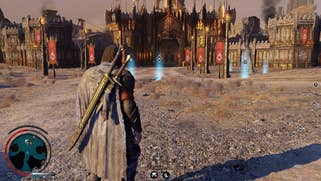
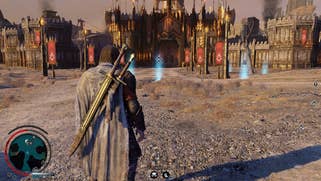


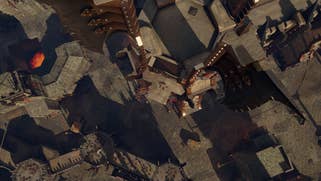
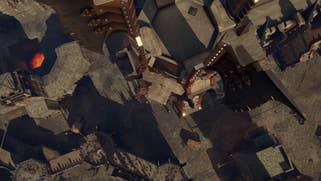

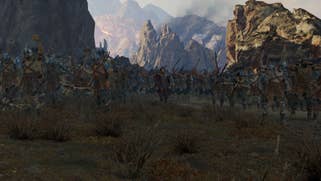


Even though it's early code, the Xbox One X build we played runs almost flawlessly for regular missions at a straight 30fps, regardless of rendering mode. However, there is one exceptional area in the Gamecom build that causes issues. The Ghasghor siege is a large-scale battle that buckles Xbox One X's performance to around the low-20s. It's a mission with a surplus of enemies and effects, and the bottleneck applies whether you're on quality or resolution mode.
As a stress-test it's fascinating to see the standard Xbox One's adaptive v-sync used here, causing occasional screen-tear. Also curious is that the quality mode appears to push Xbox One X harder, compared to the resolution mode - creating a divide of 2-3 frames per second in matching scenes. Interestingly, engaging dynamic resolution makes no difference here, and it may be the case that the sheer number of entities is causing the console to be CPU-bound. Higher detail means more draw calls, adding to the load, perhaps explaining the performance deficit here. Again, it's worth stressing this is still early code from months past, and things could change come release. For the rest of the package, Shadow of War hands in a solid 30fps, and the siege areas will be worth revisiting in the final code, with Pro factored into the mix too.
As thing stand, Shadow of War gives us a prime, early example of why Microsoft targeted Xbox One X's specific specs. The sense is that a higher pixel count alone isn't enough; more importantly, this console has the extra memory resources to give those pixels more to show off - better textures, and improved LODs, for example. Additional visual options such as the ability to toggle dynamic resolution scaling are also welcome. Those who want their true 4K can have it, while those looking for more consistent performance are also catered for.
It's the radically improved art that most obviously sets Xbox One X apart from PS4 Pro, but Monolith's approach to 4K textures likely won't apply to every game. At the start of the generation, 8GB of GDDR5 seemed almost overkill - a mammoth 16x increase over last-gen. That's still a hefty chunk of memory to work with and as such, the difference in other titles may not be so pronounced. However, based on the evidence presented by Shadow of War and Rise of the Tomb Raider in particular, it's possible that Xbox One X's 12GB provision is a good case of forward-thinking on Microsoft's part. We'll report back on final code just as soon as we can.



